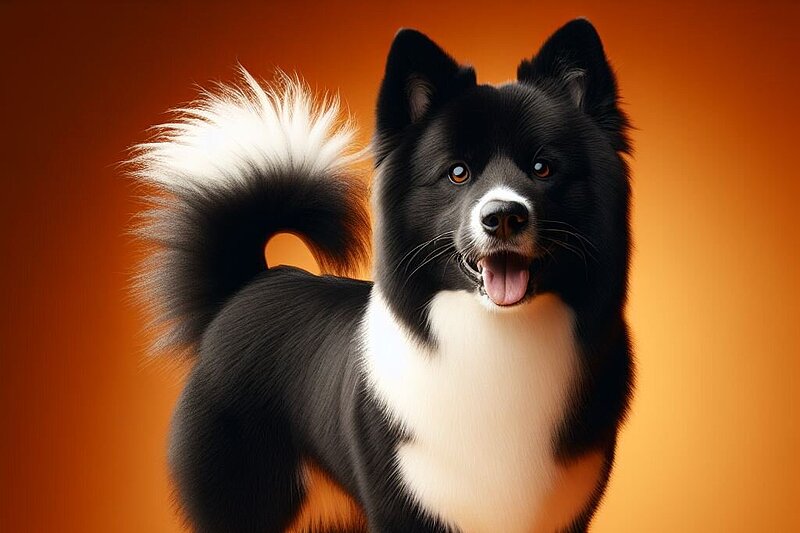The Karelian Bear Dog: The brave guardian from the far north
The history of the Karelian Bear Dog
The Karelian Bear Dog originates from the Karelia region, which stretches between Finland and Russia. Originally, this breed was bred by local hunters and fishermen to hunt bears, moose and wild boar. As early as the 17th century, these dogs were known for their courage and ability to keep even the largest and most dangerous animals at bay. They were officially recognized by the Fédération Cynologique Internationale (FCI) in 1945, which marked the beginning of their spread outside their home region.
Who is the Karelian Bear Dog suitable for?
The Karelian Bear Dog is not suitable for everyone. It is ideal for active people who spend a lot of time outdoors and enjoy hiking, hunting or other outdoor activities. This breed requires firm but loving leadership and is therefore not recommended for first-time dog owners. A large house with a garden or a rural environment are ideal, as these dogs need plenty of space and exercise.
Character and temperament
The Karelian Bear Dog is courageous, independent and extremely loyal. These dogs are alert and have a strong protective instinct, which makes them excellent watchdogs. However, they are also very stubborn and therefore require consistent training. Despite their independence, they build a strong bond with their owners and are usually friendly and patient towards their family.
Appearance of the Karelian Bear Dog
The Karelian Bear Dog is a medium-sized, strongly built dog with a dense, black coat that often has white markings. Its eyes are dark and expressive, and the upright ears give it an alert and inquisitive appearance. Males reach a shoulder height of 54 to 60 cm and a weight of around 25 to 28 kg, while females are somewhat smaller and lighter.
Grooming and health
The coat of the Karelian Bear Dog is relatively easy to care for, but requires regular brushing to remove dead hair and prevent matting. Daily brushing may be necessary during the shedding season in spring and fall. This breed is robust and healthy, but is prone to some genetic conditions such as hip dysplasia and eye problems. Regular visits to the vet and a balanced diet are therefore essential.
Exercise requirements and living environment
The Karelian Bear Dog needs a lot of exercise and is not suited to living in an apartment or urban environment. Daily, long walks and mental challenges are necessary to keep this intelligent dog busy. A good alternative are dog sports such as agility or tracking, which offer both physical and mental stimulation.
Training and education
Consistency and patience are the keys to successfully training a Karelian Bear Dog. These dogs respond well to positive reinforcement and varied training. Early socialization is important to ensure that they get along well with other dogs and people. However, due to their strong hunting instinct, they should always be kept on a leash when not running in a secure, fenced area.
Behavioral characteristics and interactions
The Karelian Bear Dog is known for its loyalty and protective instinct. They are generally patient and friendly with children, however interaction should always be supervised as they can be boisterous due to their size and energy. They can get along with other pets if they have been properly socialized, but their hunting instinct can cause problems.
Interesting facts and FCI recognition
The breed is recognized by the FCI and belongs to Group 5: Spitz and Primitive Type Dogs, Section 2: Nordic Hunting Dogs. An interesting detail is that Karelian Bear Dogs are used in some regions of the USA and Canada to control bear populations and protect livestock. Their ability to deter bears without injuring them makes them valuable working dogs in these areas.
